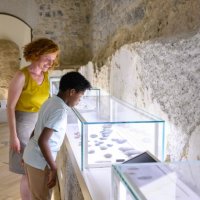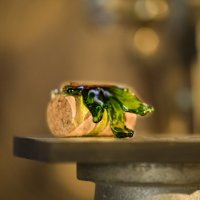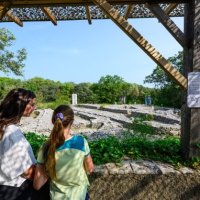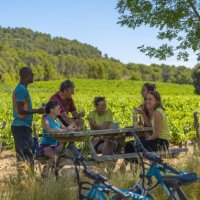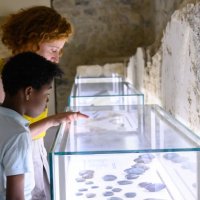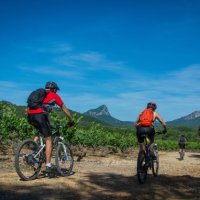Good reflexes in Pic Saint-Loup
If you'd like to discover the Grand Pic Saint-Loup area in complete safety, here are a few tips to help you make the most of your stay...
The bivouac

Concerning bivouacs (wild camping is prohibited).
A Natura 2000 site is not regulated in the same way as a national or regional park or a nature reserve, so there is no formal ban (as a reminder, there are 4 Natura 2000 sites in the Grand Pic Saint-Loup area).
However, the Grand Pic Saint-Loup does have other sites at stake: we have Prefectoral Orders for the Protection of Biotopes (APPB) which prohibit leaving the paths from 15 January to 15 June. In these cases, bivouacking is prohibited except in the immediate vicinity of the path. The APPBs in the area are
- Puech des Mourgues (Saint Bauzille de Montmel)
- Ravin des Arcs
- Hortus cliff
- Gorges de l'Hérault (south of Causse de la Selle)
However, it is forbidden to light fires:
- In summer, to combat the risk of fire
- At the entrance to the caves, as the smoke that penetrates can kill bats present in the cavity (destruction of protected species).
Hiking signs

All the routes presented on the website of the Tourist Office of the Grand Pic Saint-Loup are signposted by the Fédération Française de Randonnée Pédestre de l'Hérault.
There are almost 3,000 km of signposted trails in the Hérault.
The Hérault has almost 3,200 km of hiking trails, 1,150 km of which are maintained by Rando-Pisteurs. Nearly 140 PR trails have been developed and are accessible to all Hérault residents throughout the département.
To provide walkers with the best and safest conditions, the Département de l'Hérault is involved in preserving its network of routes in a number of ways:
Warning: We recommend that you exercise extreme caution when walking on routes not recognised by this official body (lack of signposting, insecurity, private property, etc.).
Find out more about signposting: Signposting when hiking: follow the right signs!

Climbing in the Grand Pic Saint-Loup

Sites to preserve
The territory of the Communauté de communes is covered by four Natura 2000 sites: Pic Saint-Loup, Hautes Garrigues du Montpelliérais, Gorges de l'Hérault and Lez. These geographical areas are home to natural environments and wild animal and plant species that have been identified as rare or fragile. Please respect existing facilities and do not create new ones without prior consultation.
Find out more about Natura 2000 in the Grand Pic Saint-Loup
Information
Further information on climbing in the Hérault: www.cd34-ffme.fr
Source: Community of Communes of the Grand Pic Saint-Loup

Tip 1: Get the right equipment
Good footwear is undoubtedly the number one rule for enjoyable hiking.
It's important to avoid open-toed shoes, sandals and bare feet on a hike, no matter how difficult the route. A comfortable rucksack containing a few essentials such as (non-exhaustive list) :
- Water bottle
- Food
- Rain gear and possibly fleece
- Telephone and IGN map
- Survival blanket
- First-aid kit
- Plastic bag for collecting your rubbish
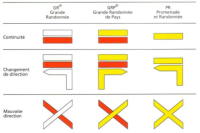
Tip 2: Know the waymarked paths
When hiking, it's vital to be able to find your way without difficulty. In other words, finding your way and knowing and "understanding" the environment in which you are walking - in short, knowing where you are at all times and how to reach a given destination.
Do not leave a signposted path at random: there is a risk of rocky bars, cliffs, holes and crevasses;
Tip N°3 : know how to be safe
Check the weather before you go. This is one of the most important tips for safe hiking. It is essential to check whether the trails are open or under fire access regulations.
Tip 4 : think about eating well
Do not neglect to carry enough water (minimum 1.5 l), especially in summer when it is hot. Do not forget to pick up all the rubbish and various waste, and put them in a plastic bag to preserve our environment.
Some ideas:
- dried fruits
- cereal bars
- biscuits
- chocolate.
- Of water
Tip 5: Bring a first aid kit
Preparing and bringing a first aid kit is one of the most overlooked tips, yet it is an indispensable component (non-exhaustive list):
- Sterile compresses,
- a stretch adhesive tape (strapping),
- an adhesive suture pouch (strip),
- individual dressings,
- hydrocolloid dressings to prevent and protect blisters,
- an antiseptic and healing cream,
- Mosquito repellent
- A pair of tweezers,
- sun protection products,
- Aspivenins
- 500 mg aspirin or Paracetamol – chewable tablets, Arnica...
- mint alcohol and sugars in case of fatigue,
- a survival blanket,
- compressive dressings.
And don't forget your camera...
And don't forget the #grandpicsaintlouptourisme to share your memories of your trip to the Grand Pic Saint-Loup.
Good to know: emergency numbers
Available free of charge throughout the European Union, 112 aims to offer, in addition to national emergency numbers, a single call number in all EU Member States. The emergency numbers allow you to reach the emergency services free of charge 24/7.

Hiking is the best way to discover the Grand Pic Saint-Loup area, but there are a few basic rules and tips to follow.
News to follow...
La randonnée en Grand Pic Saint-Loup
Reminder of the rules of practice and federal safety instructions for climbing in natural sites
Climbers and other outdoor enthusiasts are solely responsible for their own safety. In the case of minors, this responsibility lies with the parents or supervisors in accordance with current legislation.
Any advice or assistance does not exempt the person receiving or using it from assessing the risks to which he or she may be exposed as a result of engaging in the chosen route, course or itinerary. (www.ffme.fr)

